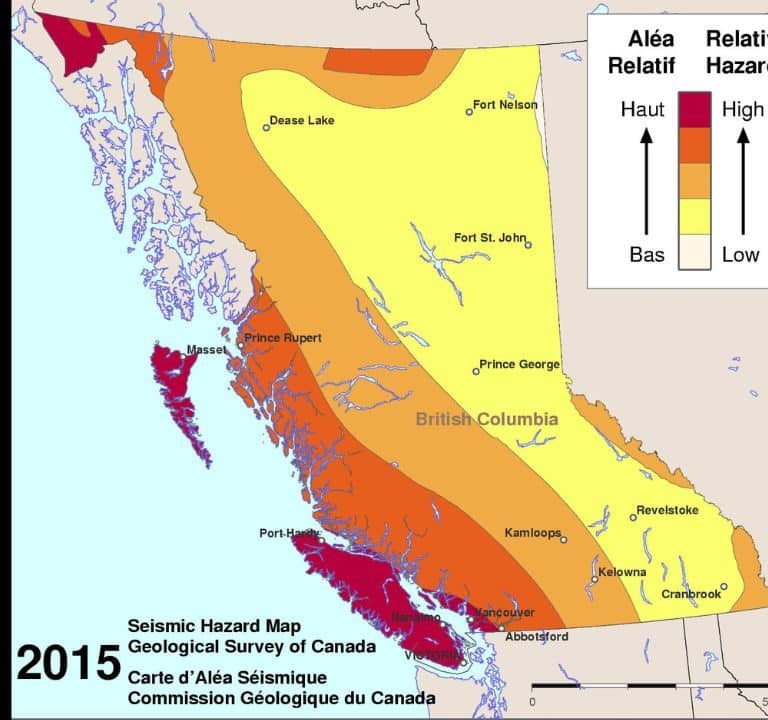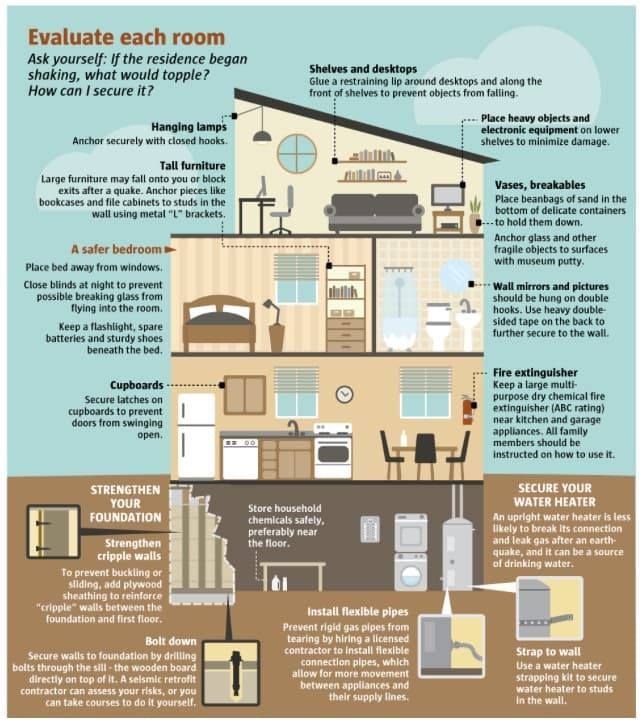

The entire Lower Mainland is located in one of the most seismically active regions of Canada. Small earthquakes occur almost daily in this area. More than 100 earthquakes with a magnitude of 5 or greater have occurred in southwestern BC in the past 70 years.
We must be prepared for more earthquakes.
Earthquakes, on their own, are not necessarily emergencies. The impacts to buildings, infrastructure, and other areas caused by an earthquake, with the potential threat to life safety, are what create emergencies.
Visit PreparedBC for more information on earthquakes and download a copy of the following guide:

The best way to protect yourself during an earthquake and aftershocks is to DROP, COVER and HOLD.
When the shaking begins drop under a sturdy desk, table, or piece of furniture. Hold onto the legs of the furniture and hold this position. This will provide coverage to protect you from flying and falling debris.
For more ways to Drop, Cover, and Hold on, visit ShakeOutBC.ca

During an earthquake, shaking can cause loosely packed, water-saturated sediments such as sand or silt to turn into a fluid mass. This is known as liquefaction. When this happens the sediments lose their strength and can no longer fully support structures, which may lean or settle.
Richmond is likely to experience pockets of liquefaction, causing roads to buckle and crack, utilities to be damaged, and in extreme cases, buildings to tilt.

During an earthquake, flying and falling debris cause the majority of injuries and financial loss.
Conduct a Home Hazard Hunt (download the PDF below) to identify and eliminate dangers to protect your family and home. Walk through each room and identify any object that could fall and injure someone, cause a fire, block an exit route, or would be costly to replace.
For hazards that cannot be mitigated, consider purchasing insurance to cover the costs of damage.

Computer soil models predict that dikes will sustain some damage during an earthquake; however, the dikes will remain an intact barrier to flooding. City staff have emergency equipment readily available to repair critical damage after an earthquake or other significant event. Learn more about the City’s Flood Protection.

While Richmond is an island community, we are not at significant risk of a tsunami. A 2005 SFU study found no evidence that a significant tsunami has impacted the Fraser River delta, from any source, in the last 4000 years.
Hypothetical tsunamis generated from other sources, such as land based landslides and underwater earthquakes in the Georgia Strait, have not been extensively studied. However, as there is no evidence that significant tsunamis have occurred in the past 4000 years, the City considers it highly unlikely that such sources could trigger a significant tsunami.
In the event of a Tsunami impacting BC, the Province will alert local governments and broadcast warnings using Alert Ready. In response to this, some local governments in high risk areas, such as on the west coast of Vancouver Island, may initiate emergency evacuation procedures. It is best to stay away from the shore as there may be tsunami flooding of low lying areas and currents can be strong and erratic.